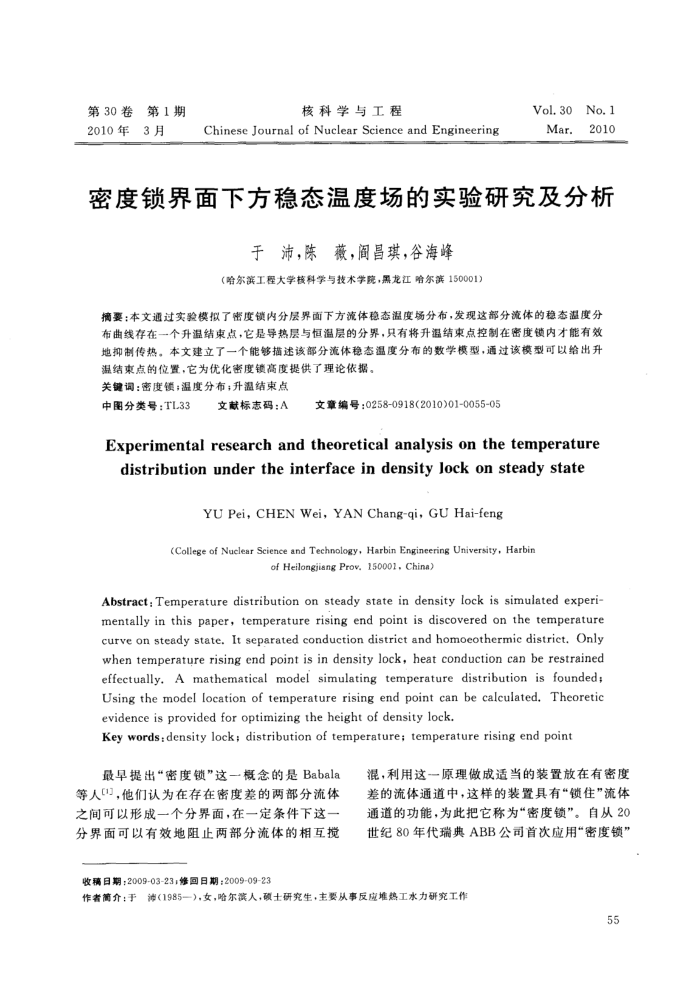您当前的位置:首页>论文资料>密度锁界面下方稳态温度场的实验研究及分析
密度锁界面下方稳态温度场的实验研究及分析
内容简介
 第30卷第1期 2010年3月
第30卷第1期 2010年3月核科学与工程
Chinese Journal of Nuclear Science and Engineering
Vol.30No.1
Mar.
2010
密度锁界面下方稳态温度场的实验研究及分析
于沛,陈薇,阎昌琪,谷海峰
(哈尔滨工程大学核科学与技术学院,黑龙江哈尔滨150001)
摘要:本文通过实验模拟了密度锁内分层界面下方流体稳态温度场分布,发现这部分流体的稳态温度分布曲线存在一个升温结束点,它是导热层与恒温层的分界,只有将升温结束点控制在密度锁内才能有效地抑制传热,本文建立了一个能够描述该部分流体稳态温度分布的数学模型,通过该模型可以给出升
温结束点的位置,它为优化密度锁高度提供了理论依据。关键调:密度锁;温度分布;升温结束点
中图分类号:TL33
文献标志码:A
文章编号:0258-0918(2010)01-0055-05
Experimental researchandtheoretical analysis onthetemperature distribution under the interface in density lock on steady state
YU Pei, CHEN Wei, YAN Chang-qi, GU Hai-feng
(College of Nuclear Science and Technology, Harbin Engineering University, Harbin
of Heilongjieng Prov, 150001, China)
Abstract: Temperature distribution on steady state in density lock is simulated experi-mentally in this paper, temperature rising end point is discovered on the temperature curve on steady state. It separated conduction district and homoeothermic district. Only when temperature rising end point is in density lock, heat conduction can be restrained effectually. A mathematical model simulating temperature distribution is founded; Using the model location of temperature rising end point can be calculated, Theoretic evidence is provided for optimizing the height of density lock.
Key words:density lock; distribution of temperature; temperature rising end point
最早提出“密度锁”这一概念的是Babala 等人,他们认为在存在密度差的两部分流体之间可以形成一个分界面,在一定条件下这一分界面可以有效地阻止两部分流体的相互搅
收稿日期;2009-03-23;修回日期:2009-09-23
混,利用这一原理做成适当的装置放在有密度差的流体通道中,这样的装置具有“锁住”流体通道的功能,为此把它称为“密度锁”。自从20 世纪80年代瑞典ABB公司首次应用“密度锁”
作者篇介:于沛(1985—),女,哈尔滨人,硕士研究生,主要从事反应堆热工水力研究工作
55